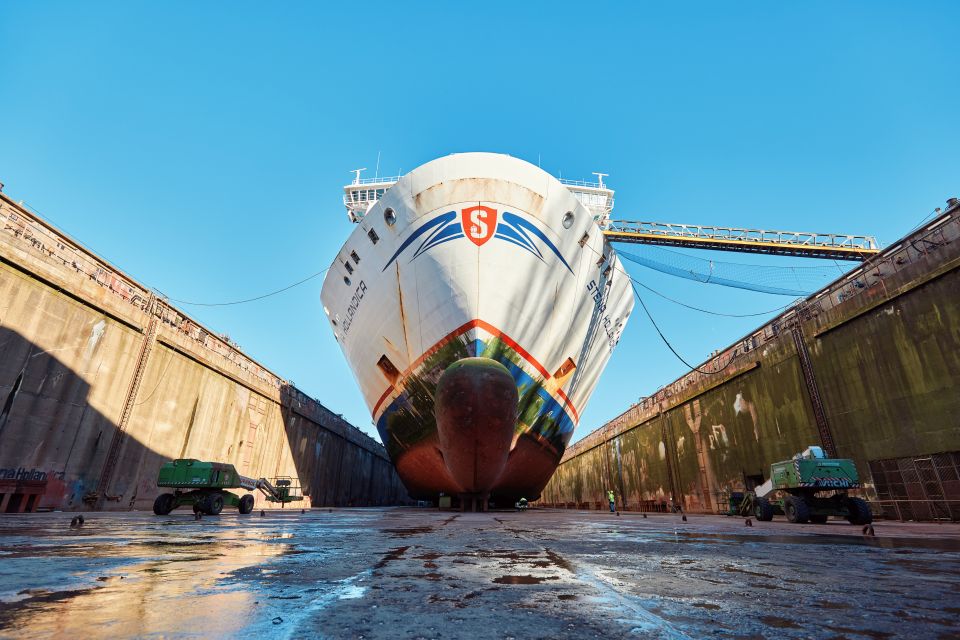In 36 days, the Stena Brittannica and Stena Hollandica have received a major upgrade. To make the ferries more sustainable, they received a new anti-fouling coating and the propellers were polished. In addition, the vessels now boast new catering facilities, more modern seating areas and increased passenger capacity.
With the modernisation of the Stena Britannica and Stena Hollandica, the ferry company is responding to the changing needs of travellers. In addition, Stena Line‘s ambition is to emit thirty per cent less CO2 by 2030.
The sister ships operate on the Hook of Holland – Harwich route and are among the largest ferries in the world.
Also read: Wärtsilä to convert Stena Line ferries to methanol
Fuel savings through special paint on underwater hull
The application of silicone paint to the entire underwater hull results in approximately 780,000 litres of fuel savings per ship on an annual basis. Per ship, this amounts to a reduction of about 2500 metric tonnes of CO2 per year.
The special and environmentally friendly paint, which is free of biocides, prevents organisms such as algae from adhering and keeps the underwater hull smooth. A smooth underside of the ship ensures less resistance of the water during a crossing, resulting in a reduction of CO2 emissions. In addition, a favourable side effect is that the silicone paint lasts for eight years instead of the usual two years.
Apart from savings thanks to special paint, polished propellers also reduce friction in the water. This leads to less drag and therefore more efficient energy consumption.
Upgrade of the travel experience
The feedback Stena Line has collected from travellers over the past period was an important starting point for the recent changes. The innovations in the area where passengers spend most of their time are far-reaching. For example, in place of the former à la carte restaurant is a brand new Stena Plus Lounge with a capacity of more than 100 seats.
For families with children, a new and homely space has been created: the Family Hub, packed with entertainment. Finally, all small areas at the back of the ship have been removed such as the cinema, meeting room and café. This has freed up space for the more modern and larger “Social Bar & Café”.
Good Wi-Fi connectivity has also been considered. An upgrade has been made by using Starlink satellite technology, which provides access to a faster and more stable internet connection.
Also read: Stena Line orders methanol vessels for Irish Sea
From LED lights to minimising food waste
‘The refurbishment was preceded by more than a year of planning with a particular focus on sustainability,’ says Erik Thulin, managing director Stena Line. ‘Our ambition is to emit thirty per cent less CO2 by 2030.’
He adds: ‘Besides reusing furniture, many lights have been replaced by LED lights, eco-friendly urinals function without water and sustainable disinfectant ECA water is used, instead of chemicals, to clean as many rooms as possible. This cleaning agent is generated by water, electricity and salt. Single-use plastic and cardboard are banned and the restaurant has switched from a buffet to plate service, where dishes are presented on a plate. This is how we try to minimise food waste.’
Also read: Yara Marine to equip four Stena Line vessels with shore power solutions








